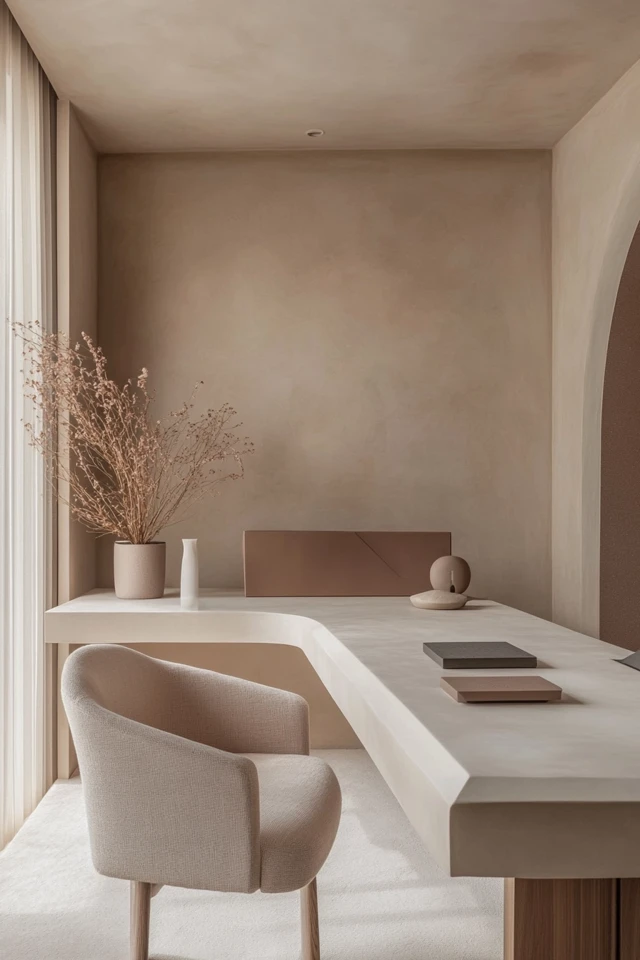Your workspace is more than just a desk and a chair—it’s the epicenter of your productivity, creativity, and focus. A minimalist workspace is designed to remove distractions, promote clarity, and make you feel motivated every time you sit down.
I used to think that the more “stuff” I had on my desk—calendars, planners, decorative items—the more productive I’d be. Spoiler: I was wrong. My workspace became so cluttered that I felt overwhelmed before even starting work. That’s when I decided to embrace minimalism. I pared everything down to the essentials, organized my tools, and added a few intentional touches to make the space functional yet inspiring. The result? My productivity skyrocketed, and I never looked back.
Here’s how to style a minimalist workspace that maximizes focus and efficiency while looking effortlessly chic.
Why a Minimalist Workspace?
- Reduces Distractions: A clean, clutter-free desk helps you concentrate on the task at hand.
- Promotes Clarity: Minimalism creates mental and physical space for clear thinking.
- Encourages Organization: Keeping only what’s essential ensures your workspace stays tidy.
- Enhances Productivity: A streamlined environment fosters focus and efficiency.
1. Start With a Clean Slate
Why It Works:
Clearing your workspace allows you to start fresh and identify what’s truly necessary.
How to Do It:
- Remove everything from your desk and wipe down all surfaces.
- Only return essential items like your laptop, notebook, or a pen holder.
- Store non-essentials like books, papers, and cables in designated drawers or bins.
Pro Tip: Practice a “zero clutter” policy by clearing your desk at the end of each day.
2. Choose a Simple, Functional Desk
Why It Works:
A minimalist desk with clean lines and no unnecessary frills sets the tone for a clutter-free workspace.
How to Do It:
- Opt for a desk with a neutral color like white, black, or natural wood.
- Choose a size that fits your needs without overwhelming the room.
- Look for built-in storage or cable management to keep the surface clean.
Pro Tip: A standing desk can add flexibility and encourage better posture without compromising minimalism.
3. Invest in an Ergonomic Chair
Why It Works:
An ergonomic chair promotes comfort and focus, preventing distractions caused by discomfort.
How to Do It:
- Choose a chair with adjustable height, lumbar support, and a clean design.
- Stick to neutral colors that blend seamlessly with your workspace.
- Avoid bulky, overly padded chairs that detract from the minimalist aesthetic.
Pro Tip: Add a small, neutral-toned cushion or lumbar pillow for extra support if needed.
4. Prioritize Cable Management
Why It Works:
Visible cables and cords create visual clutter, which can be distracting and stressful.
How to Do It:
- Use cable organizers, clips, or sleeves to bundle and hide cords.
- Opt for wireless accessories like a mouse, keyboard, and headphones.
- Install a cable tray or box under your desk to keep cords off the floor.
Pro Tip: Label cables to make it easy to identify and manage them without untangling everything.
5. Incorporate Smart Storage Solutions
Why It Works:
Smart storage keeps your workspace organized and clutter-free without sacrificing style.
How to Do It:
- Use drawer organizers for small items like pens, paper clips, and sticky notes.
- Add a minimalist shelf or cabinet nearby for books and files.
- Store frequently used items in a single, sleek tray or caddy on your desk.
Pro Tip: Keep storage units in the same color palette as your desk for a cohesive look.
6. Embrace Natural Light
Why It Works:
Natural light boosts mood and focus, creating a more inviting workspace.
How to Do It:
- Position your desk near a window to maximize daylight.
- Use sheer curtains to filter harsh sunlight without blocking it entirely.
- Supplement with a minimalist desk lamp for overcast days or evening work.
Pro Tip: Choose a lamp with adjustable brightness and a sleek, modern design.
7. Add Greenery
Why It Works:
Plants bring life to your workspace and help reduce stress while maintaining a minimalist aesthetic.
How to Do It:
- Choose low-maintenance plants like succulents, pothos, or snake plants.
- Use simple, neutral-colored planters to keep the focus on the greenery.
- Limit yourself to one or two plants to avoid overcrowding.
Pro Tip: Place plants in indirect light to keep them thriving without frequent attention.
8. Keep Decor Minimal and Intentional
Why It Works:
Minimal decor keeps the focus on work while adding personality and style.
How to Do It:
- Hang a single piece of wall art or a framed print that inspires you.
- Use functional decor, like a sleek clock or a modern pen holder.
- Display a small personal item, like a family photo or meaningful keepsake, for a personal touch.
Pro Tip: Stick to a consistent color palette to maintain the minimalist aesthetic.
9. Choose Multi-Functional Accessories
Why It Works:
Multi-functional items save space and reduce the need for extra tools or gadgets.
How to Do It:
- Use a monitor stand that doubles as storage for your keyboard or notebooks.
- Opt for a desk mat that serves as both a writing surface and a mouse pad.
- Invest in a lamp with built-in USB ports for easy charging.
Pro Tip: Look for items with simple, clean designs that align with the overall workspace style.
10. Create a Digital Workspace
Why It Works:
A digital workspace reduces the need for physical items like notebooks and calendars, keeping your desk clean.
How to Do It:
- Use productivity apps like Notion, Trello, or Google Calendar for task management.
- Store files digitally instead of printing them.
- Invest in a high-quality monitor to streamline your workflow.
Pro Tip: Use cloud storage services to access files from any device and reduce dependency on physical storage.
Picture Gallery
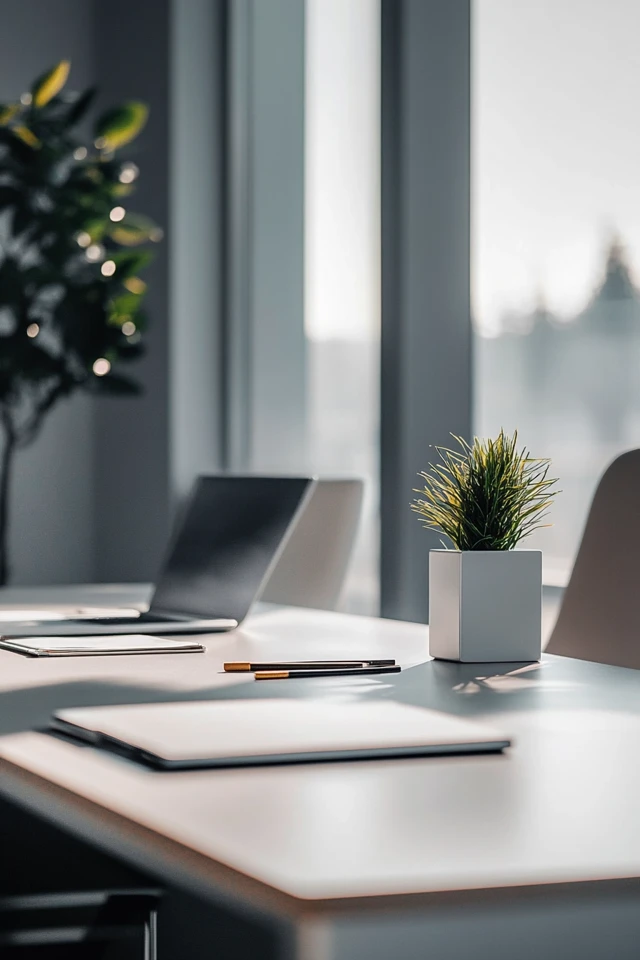
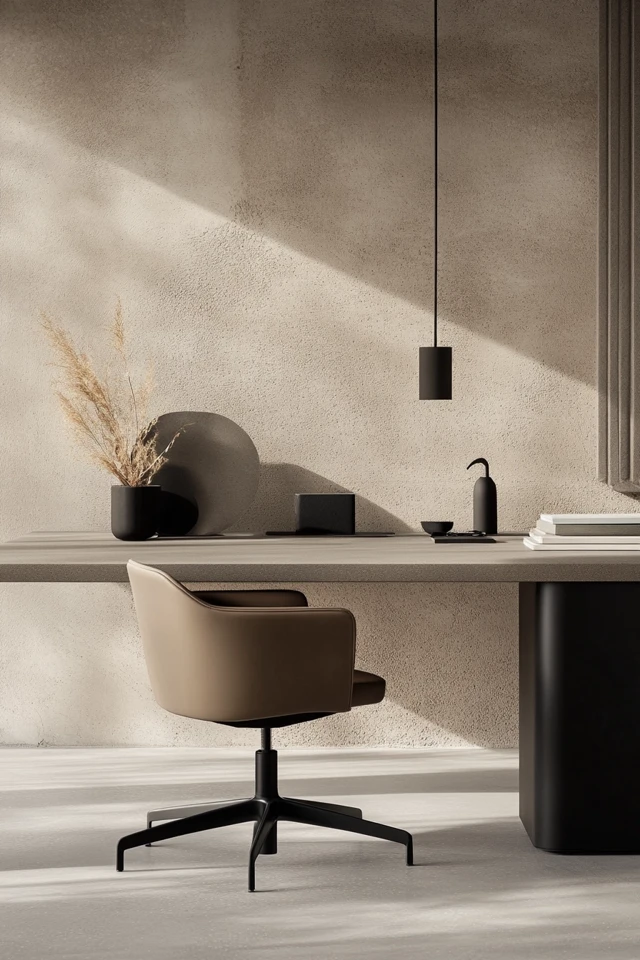
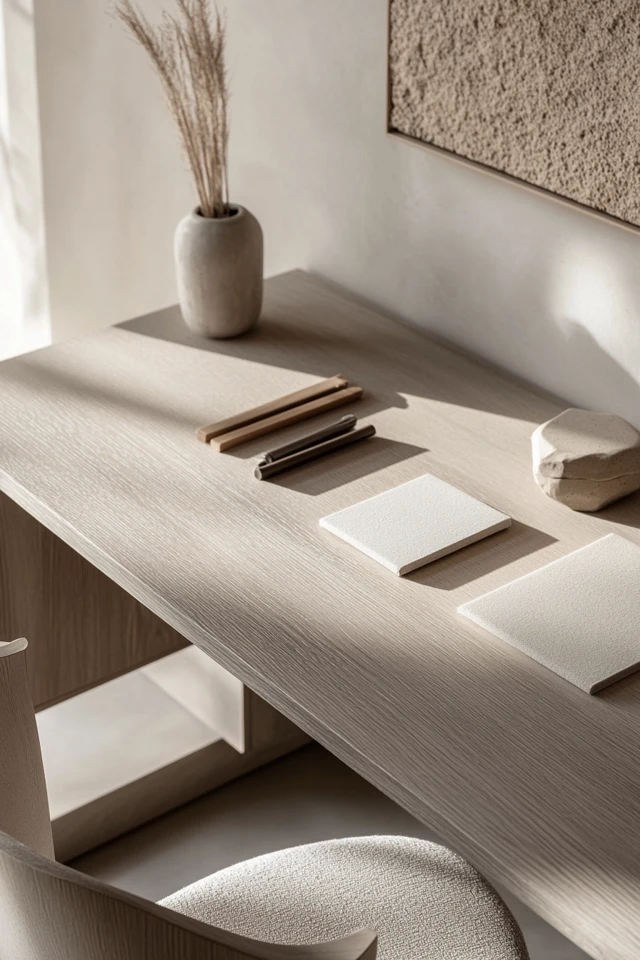
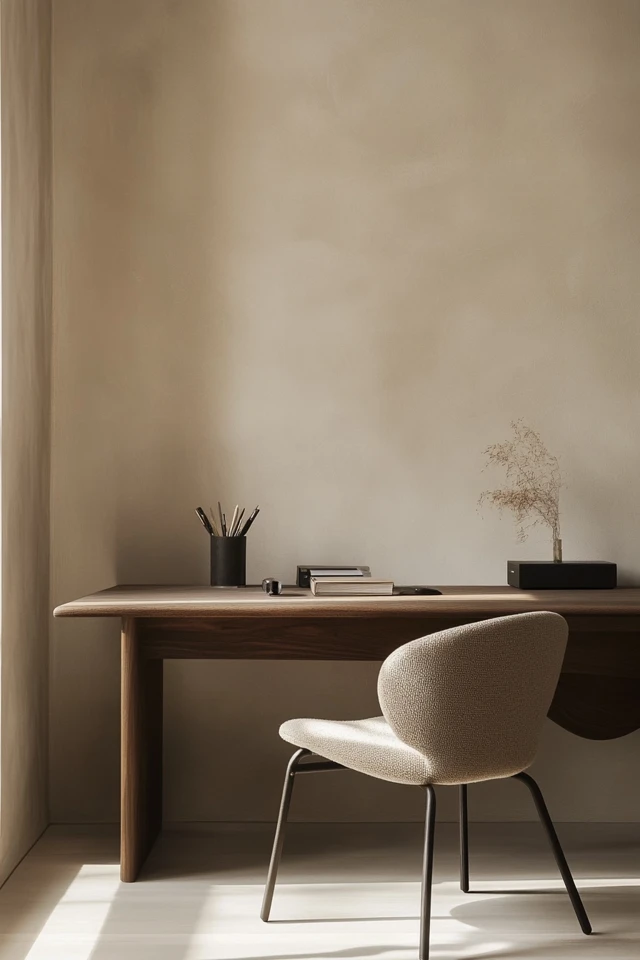
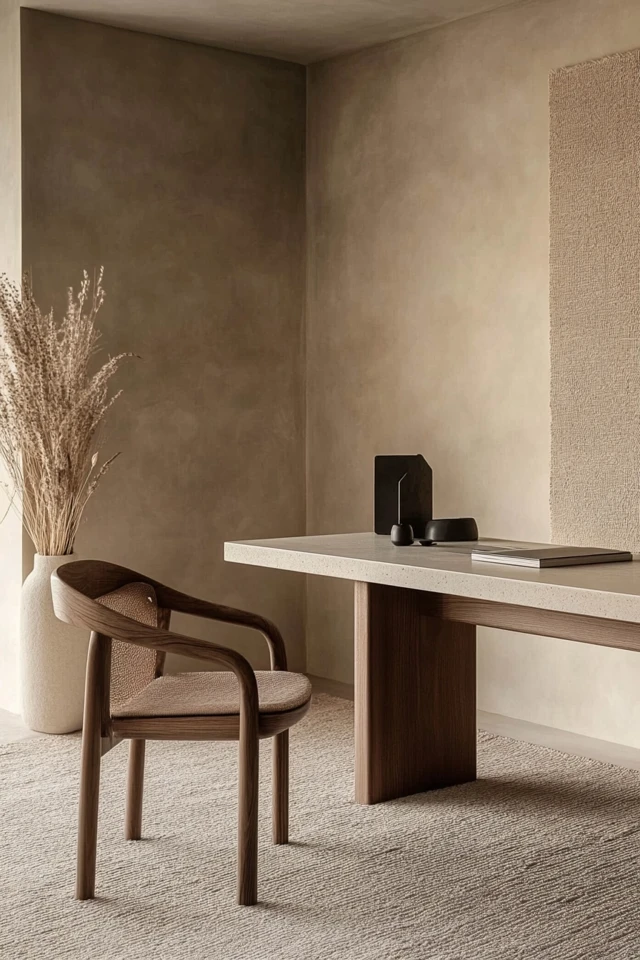
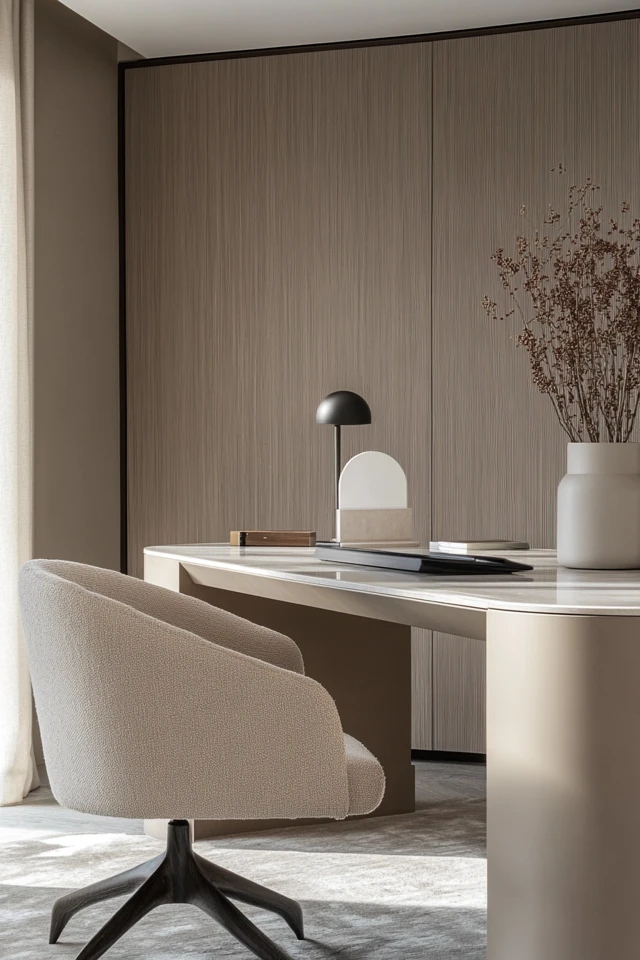
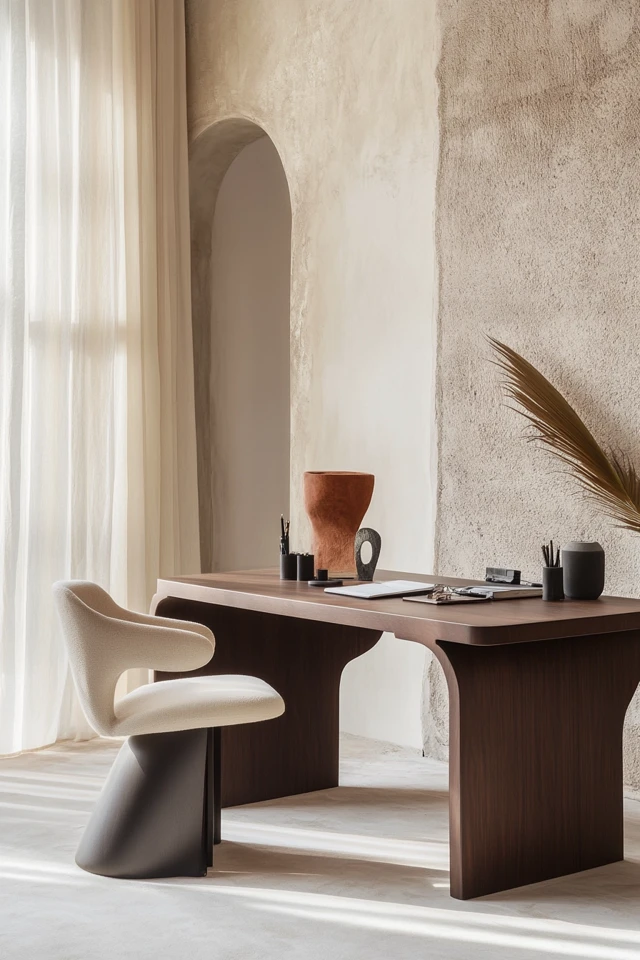
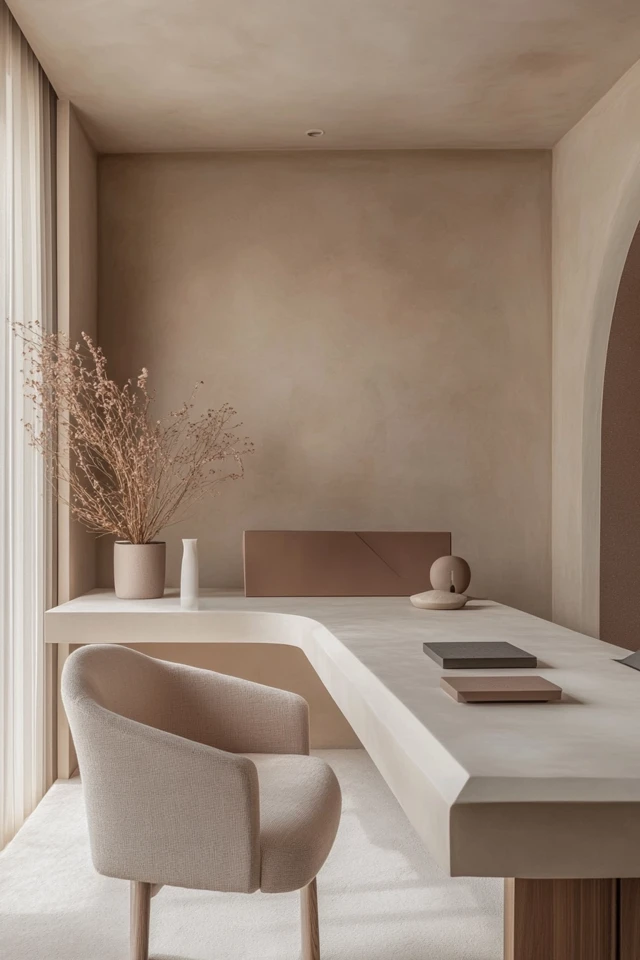
Conclusion
Styling a minimalist workspace is all about balancing functionality with aesthetics. By decluttering, organizing, and choosing intentional pieces, you can create a space that promotes focus and productivity. The key is to keep it simple, clean, and inspiring—free of distractions and unnecessary items.
Whether you’re working in a dedicated home office or a small corner of your living room, these tips will help you design a workspace that works for you. Remember, a minimalist workspace isn’t just about how it looks; it’s about how it makes you feel—calm, focused, and ready to tackle the day.
FAQs
1. What’s the best desk size for a minimalist workspace?
Choose a desk that’s large enough to hold your essentials (laptop, notebook, etc.) but compact enough to avoid wasted space.
2. Can I personalize my minimalist workspace?
Yes! Add one or two meaningful items, like a photo or small decor piece, but keep it intentional to avoid clutter.
3. How do I maintain a clean workspace?
Adopt daily habits like clearing your desk at the end of each day, organizing cables, and only keeping essentials within reach.
4. What colors work best in a minimalist workspace?
Neutral tones like white, gray, beige, and soft pastels create a calming environment. Add black or metallic accents for contrast.
5. How do I make a minimalist workspace comfortable?
Invest in ergonomic furniture, add a soft desk mat, and use natural light or adjustable lighting to create a cozy yet functional setup.

